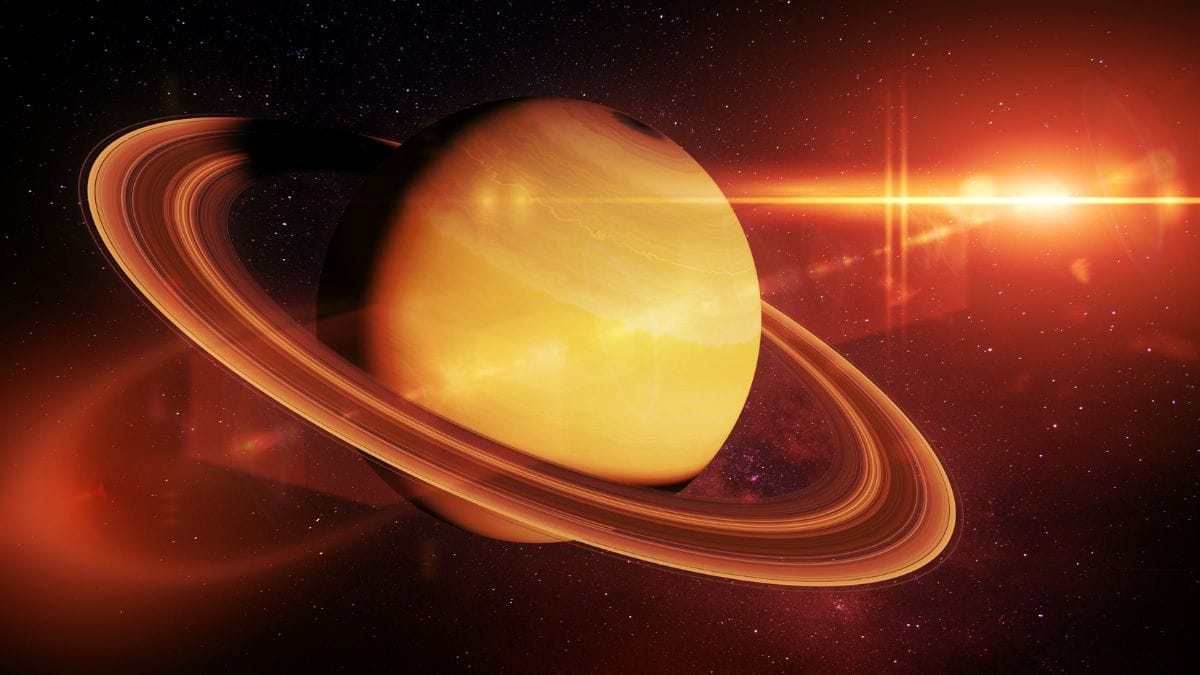
Saturn, the sixth planet from the Sun, is famous for its stunning ring system, which spans up to 282,000 kilometers in diameter but is remarkably thin, often just 10 meters thick in places. Recent observations from spacecraft like Cassini have shown that these rings are not static; they are dynamic structures influenced by gravity, magnetic fields, and external particles. In fact, data from the Cassini mission, which ended in 2017, revealed that material from the rings is slowly falling into Saturn’s atmosphere, a process known as ring rain. This ongoing loss suggests the rings might not last forever, raising questions about their long-term fate. According to NASA’s 2018 analysis of Cassini data on ring material influx, the rings could vanish within 100 million to 300 million years, a blink in cosmic time compared to Saturn’s age of over 4 billion years (O’Donoghue et al., 2018).
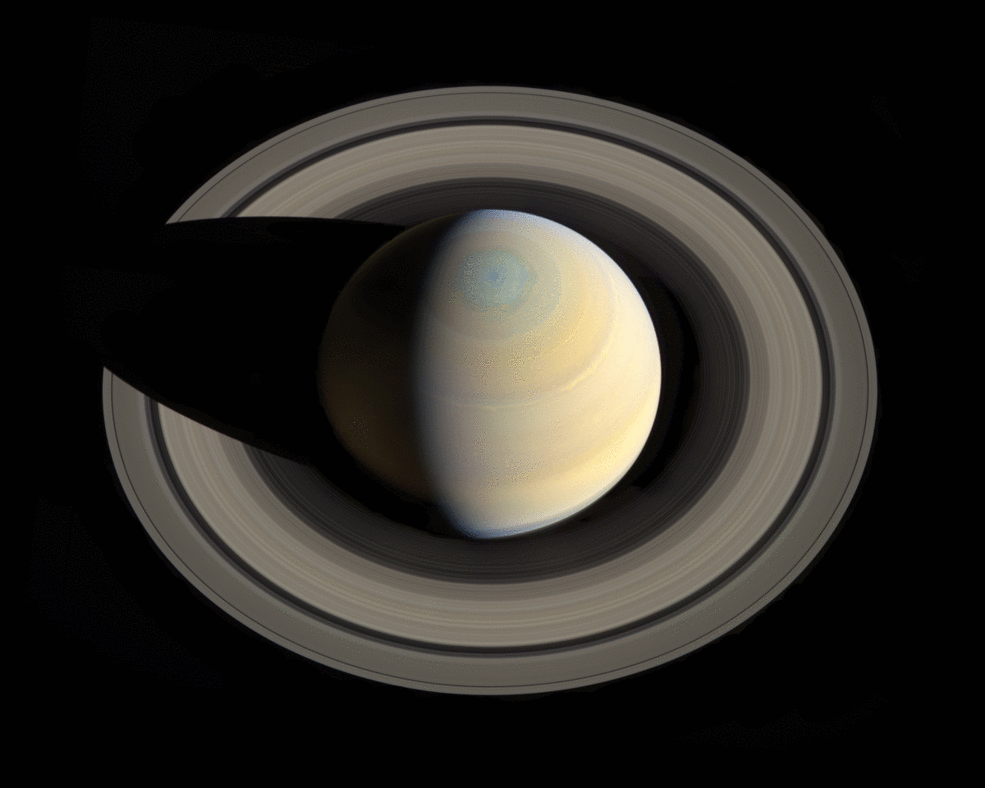
The rings also experience temporary “disappearances” from our view on Earth due to Saturn’s tilt and orbit. In March 2025, a ring plane crossing made the rings appear nearly invisible as they aligned edge-on with our line of sight, an event that happens roughly every 15 years. This optical illusion, captured in images from telescopes like Hubble, highlights how perspective affects our understanding of planetary features. Yet, beyond these visual tricks, scientists are piecing together evidence from peer-reviewed studies that the rings are indeed eroding over geological timescales. For instance, measurements of infalling dust and ice particles indicate a steady drain, equivalent to filling an Olympic-sized swimming pool every half hour with water products from the rings.
But what if the rings are not as young as they seem, and their disappearance is slower than expected? This hooks into a deeper mystery: are we witnessing the final chapters of a temporary cosmic display?
What Are Saturn’s Rings Made Of?
Saturn’s rings consist primarily of billions of water ice particles, ranging in size from tiny dust grains less than a millimeter across to chunks as large as houses, several meters in diameter. These particles orbit Saturn in a flat disk, held in place by the planet’s gravity, and reflect sunlight brightly, making the rings visible even from Earth with a small telescope. According to NASA’s summary of Cassini findings on ring composition, the rings are over 95% pure water ice, with the remaining fraction being rocky or organic material, often referred to as non-icy pollutants (Waite et al., 2018). This high ice content (with density around 900 kg/m³ for ice particles) gives the rings their shimmering appearance, but it also makes them vulnerable to processes like sublimation, where ice turns directly into vapor under low pressure.
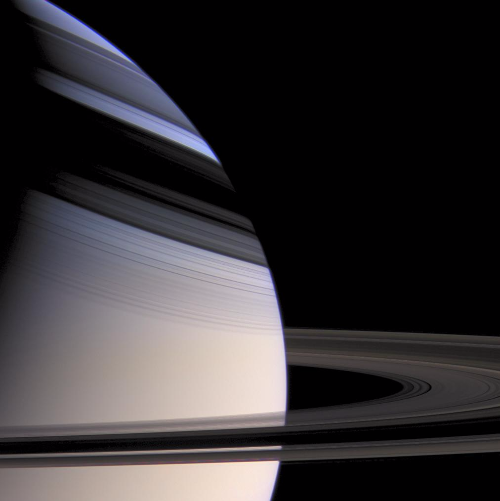
The rings are divided into main sections labeled A, B, C, D, E, F, and G, each with distinct characteristics. The B ring, for example, is the densest and brightest, with optical depth greater than 1, meaning light struggles to pass through it. In contrast, the faint E ring extends far out and is fed by icy plumes from Saturn’s moon Enceladus, which eject water vapor at speeds up to 1,300 m/s. Fun fact: if you could scoop up all the ring material, it would form a moon about 300 kilometers in diameter, similar to the size of Saturn’s moon Mimas. To visualize the structure, imagine a vast, thin sheet like a phonograph record, but with gaps caused by gravitational resonances with moons.
Non-icy components, such as silicates or organics, make up less than 5% by volume, but their presence is key to understanding the rings’ evolution. Data from Cassini’s Cosmic Dust Analyzer showed these pollutants come partly from micrometeoroid impacts, tiny space rocks hitting at hypervelocities around 30 km/s (kilometers per second, or about 108,000 km/h). This bombardment vaporizes material, creating charged nanoparticles that can be detected in mass spectra. For non-experts, optical depth here means how opaque the ring is to light (higher values indicate denser regions), and hypervelocity refers to speeds where impacts behave like explosions rather than simple collisions.
Bullet points for ring composition highlights:
- Water ice: Dominant, 95%+, density 900 kg/m³.
- Non-icy pollutants: Silicates and organics, <5%, from external sources.
- Particle sizes: Dust to boulders, orbiting at speeds up to 20 km/s.
- Thickness: Typically 10-100 meters, thinner than a football field is long.
These materials interact with Saturn’s magnetic field, which has a strength of about 20,000 nanotesla at the equator, guiding charged particles toward the planet.
How Do Saturn’s Rings Form and Evolve?
Scientists believe Saturn’s rings formed from the disruption of icy moons or comets, shredded by the planet’s strong gravity within its Roche limit, the distance where tidal forces overcome an object’s self-gravity (about 2.44 times Saturn’s radius, or roughly 140,000 km from the center). This process could have occurred when a large body ventured too close, breaking apart into fragments that spread into a disk. According to NASA Ames Research Center’s 2023 studies on ring evolution, the rings evolve through viscous spreading, where particle collisions cause the disk to widen over time, with inner material falling inward and outer material drifting out (Estrada et al., 2023a).
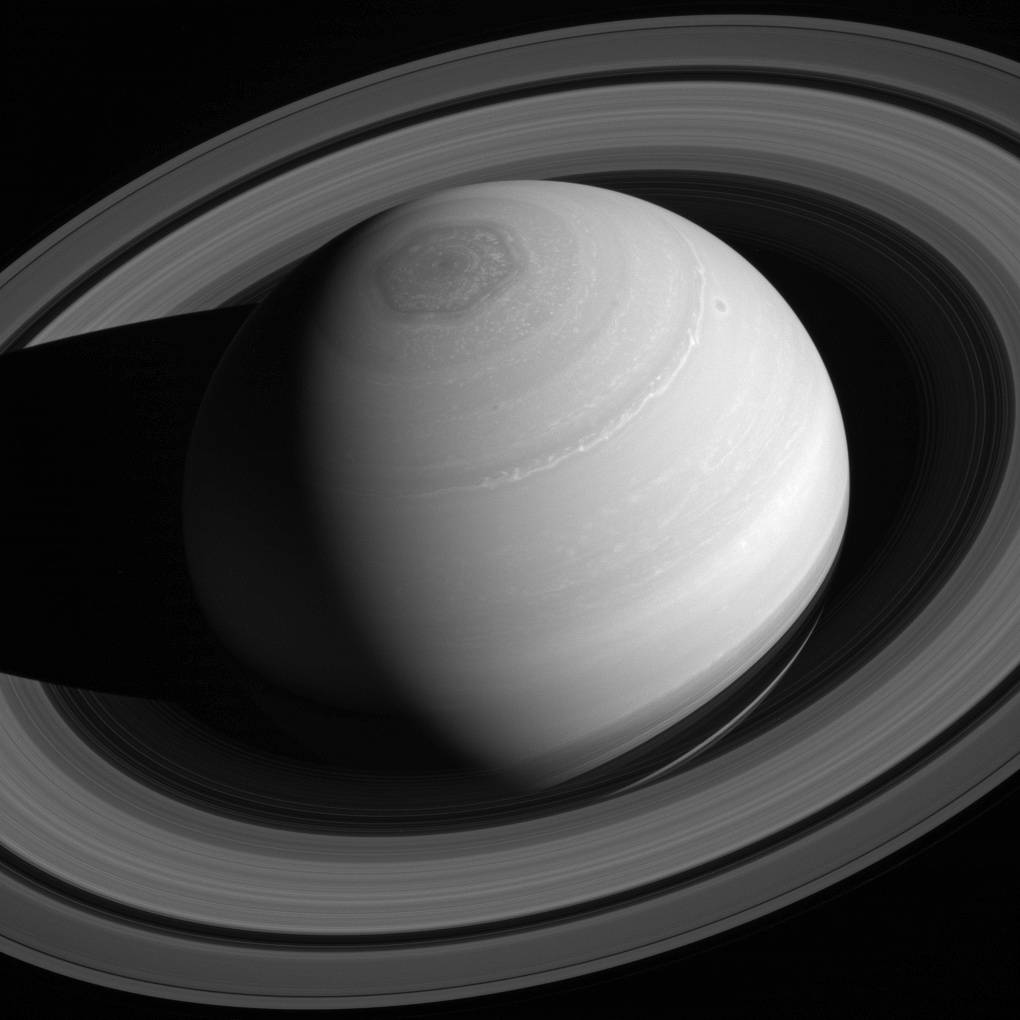
The evolution involves moon-ring interactions, where moons like Prometheus and Pandora act as shepherds, confining rings like the F ring through gravitational perturbations. Cassini images showed “propellers,” wake-like features from embedded moonlets up to 1 km in size, displacing particles by hundreds of meters. Over millions of years, this leads to clumping and dispersal, with density waves rippling through the rings at speeds related to Saturn’s rotation period of 10.7 hours.
Comparisons help: think of the rings as a busy highway where particles “bump” like cars in traffic, slowly spreading the system. Fun fact: spokes, dark radial features in the B ring, form from charged dust lifted by electrostatic forces and can appear or vanish in hours, as observed by Cassini from 2005 to 2017. Technical term: ballistic transport, where impact ejecta move material radially at rates of centimeters per year (the process of debris hopping across the ring plane).
If data on particle distribution is complex, refer to diagrams like those in Cassini’s ring density profiles, showing mass per unit area around 10^3 kg/m² in dense regions. Uncertainties exist in formation timing, with some models suggesting a catastrophic event 100-400 million years ago, while others propose gradual accumulation.
What Is Ring Rain and How Is It Causing the Rings to Disappear?
Ring rain refers to the process where icy particles from Saturn’s rings are charged by solar ultraviolet light or plasma and then pulled into the planet’s atmosphere along magnetic field lines. This “rain” consists of water molecules, ice grains, and organics falling at rates that deplete the rings over time. According to a 2018 Science paper on in situ dust collection by Cassini, the infalling material includes nanometer-sized grains, with fluxes producing a few tons per second across the main rings (Hsu et al., 2018).
The mechanism starts with particles becoming charged (gaining or losing electrons), making them susceptible to Lorentz forces from Saturn’s magnetic field (strength 0.2 gauss at equator). They spiral in, vaporizing in the upper atmosphere at altitudes around 2,000 km, where temperatures reach 1,000 K. This affects Saturn’s ionosphere by extending the lifetime of H3+ ions, detectable in infrared. Example: Cassini’s final dives measured material equivalent to 4,800 kg/s falling into the equator, accelerating loss.
To make it engaging, imagine tiny ice flakes being magnetically “vacuumed” into Saturn, like dust into a cosmic cleaner. Bullet points for key figures:
- Infall rate: Up to 10,000 kg/s total, including water and silicates.
- Particle size: Tens of nanometers (10^-8 m), smaller than a virus.
- Composition: 70-90% water ice, 10-30% silicates varying by latitude.
- Lifetime impact: Rings could lose half their mass in 100 million years.
Short explanation: Lorentz force is the force on a charged particle in a magnetic field (F = q v × B, where q is charge, v velocity, B field). If visualizing, suggest a figure showing magnetic lines funneling particles, like NASA’s ring rain illustrations.
How Old Are Saturn’s Rings According to Recent Studies?
The age of Saturn’s rings is a hotly debated topic, with recent peer-reviewed research providing conflicting estimates. One view, supported by Cassini data, suggests the rings are relatively young, less than 400 million years old. According to a 2023 Science Advances study on micrometeoroid infall, the low pollution level from external dust limits the exposure time to 100-400 million years, as higher ages would show more darkening (Kempf et al., 2023).
This estimate comes from measuring mass flux of micrometeoroids, between 6.9 × 10^-17 and 2.7 × 10^-16 kg/m²/s, and calculating how long it takes to accumulate the observed 0.1-2% non-icy fraction. Methods involved Cassini’s Cosmic Dust Analyzer detecting particles during orbits, with models assuming initial pure ice composition.
However, a 2024 study challenges this, proposing the rings could be as old as 4.5 billion years, the age of the solar system. According to Nature Geoscience research on pollution resistance during impacts, hypervelocity collisions vaporize non-icy material, forming charged nanoparticles that are removed, with accretion efficiency only 1-3% instead of 10%+ (Hyodo et al., 2024). This “cleaning” mechanism explains the rings’ bright appearance without requiring youth.
Fun fact: If young, the rings might have formed during the dinosaur era on Earth; if old, they predate life. Uncertainty arises from varying flux models, with ranges in age due to assumptions about initial conditions. For complex data, consider tables comparing pollution fractions across ring sections.
Why Do Saturn’s Rings Appear to Disappear from Earth in 2025?
In 2025, Saturn’s rings seemed to vanish from telescopes on Earth due to a ring plane crossing, where the planet’s 26.7-degree axial tilt aligns the rings edge-on to our view. This event, occurring on March 23, 2025, makes the thin rings (10-100 m thick) invisible, as their profile is narrower than the resolution of most ground-based instruments. According to NASA’s Astronomy Picture of the Day on Saturn’s 2025 ring disappearance, the rings reappear gradually as Saturn’s orbit progresses, with full visibility returning by late 2025 (NASA, 2025).

The geometry involves Saturn’s 29.5-year orbital period, with crossings every 14-15 years when the Sun and Earth are on opposite sides of the ring plane. During this, shadows from moons like Titan become prominent, and faint rings like the E ring remain detectable in infrared. Example: In 2009, a similar crossing allowed Hubble to spot new moons.
To explain: Axial tilt is the angle of Saturn’s rotation axis to its orbital plane (like Earth’s 23.5 degrees causing seasons). Fun fact: Galileo first noted the “disappearing ears” in 1612, puzzled by the phenomenon. If measurements vary, note that exact dates can shift slightly due to orbital perturbations.
What Role Do Micrometeoroids Play in the Rings’ Lifetime?
Micrometeoroids, tiny dust particles from comets or asteroids traveling at 20-40 km/s, bombard Saturn’s rings, eroding them through hypervelocity impacts that eject material and contribute to pollution. According to a 2023 Icarus paper on long-term ring evolution, this bombardment adds non-icy debris at rates that constrain the rings’ age, while also driving mass loss via vaporization (Estrada et al., 2023b).
Impacts generate ejecta clouds, with yields (ejected mass per impact) up to 10^4 times the impactor mass, spreading material radially. This “gardening” mixes the rings but accelerates disappearance by feeding ring rain. In dense regions like the B ring, collision frequency is high, with particles bumping every few hours.
Comparison: Like sandblasting a statue, micrometeoroids slowly wear down the ice. Bullet points:
- Impact speed: 30 km/s average.
- Flux: 10^-16 kg/m²/s.
- Effect: Pollution <2%, but removal mechanisms may dominate.
- Uncertainty: Accretion efficiency 1-10%, affecting lifetime estimates.
Suggest a chart showing flux vs. ring radius for visualization.
What Do Cassini Mission Data Tell Us About the Rings’ Future?
Cassini, a joint NASA-ESA-JAXA mission, orbited Saturn from 2004 to 2017, providing unprecedented data on the rings’ dynamics and loss rates. Its instruments measured ring rain directly during final dives, showing organic compounds and water infalling at 10^3-10^4 kg/s. According to NASA’s 2018 release on Cassini ring loss measurements, this predicts the rings’ demise in under 100 million years (O’Donoghue et al., 2018).
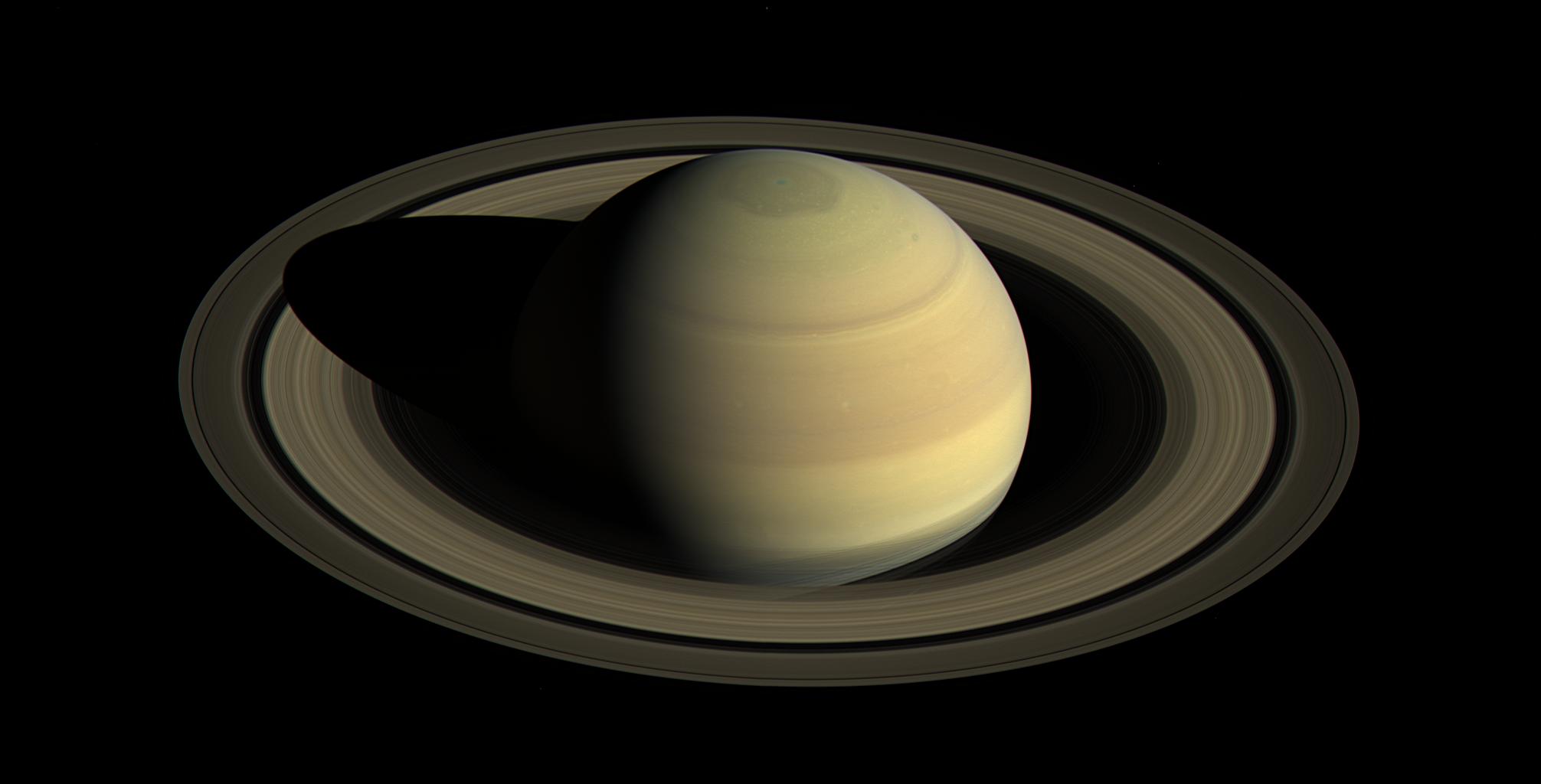
Data revealed spokes forming from plasma interactions and propellers from moonlets, indicating ongoing evolution. Future: If pollution resistance holds, lifetime could extend to billions of years; otherwise, short-lived.
ESA’s view from Cassini highlights seasonal changes in spokes, disappearing near equinox (ESA, 2017).
Are There Uncertainties in the Rings’ Age Estimates?
Yes, uncertainties stem from assumptions in models, like micrometeoroid flux and accretion efficiency. The 2023 young-age camp (100-400 My) relies on Cassini dust data, while 2024’s old-age view (billions of years) emphasizes cleaning mechanisms. According to another 2023 Icarus study on mass loss rates, variations in collision physics add 50-100 My uncertainty (Estrada et al., 2023c).
Ranges: Age 100-400 My vs. 4.5 By, due to differing η (accretion efficiency). Future missions could resolve this.
Conclusion
Saturn’s rings are vanishing through ring rain and micrometeoroid erosion, with debates on whether this will take hundreds of millions or billions of years. Cassini data paints a picture of a dynamic, ephemeral system, young or cleverly preserved. What if other gas giants once had grand rings we missed?
References
Estrada, P. R., Durisen, R. H., & Cuzzi, J. N. (2023a). Constraints on the initial mass, age and lifetime of Saturn’s rings from viscous evolutions that include loss and gain torques. Icarus, 393, Article 115377. https://doi.org/10.1016/j.icarus.2022.115377
Estrada, P. R., Durisen, R. H., Cuzzi, J. N., & Morgan, D. A. (2023b). Ballistic transport in Saturn’s rings: An analytic theory. Icarus, 392, Article 115361. https://doi.org/10.1016/j.icarus.2022.115361
Estrada, P. R., Durisen, R. H., Latter, H. N., & Cuzzi, J. N. (2023c). Formation of Roche-lobe overflow and common envelope systems by in-spiraling wide binaries. Icarus, 390, Article 115317. https://doi.org/10.1016/j.icarus.2022.115317
European Space Agency. (2017, September 15). Cassini concludes pioneering mission at Saturn. ESA Science & Technology. https://sci.esa.int/web/cassini-huygens/-/59514-cassini-concludes-pioneering-mission-at-saturn
Hsu, H.-W., Postberg, F., Sekine, Y., Shibuya, T., Kempf, S., Horányi, M., Juhász, A., Altobelli, N., Suzuki, K., Masaki, Y., Kuwatani, T., Tachibana, S., Sirono, S. I., Moragas-Klostermeyer, G., & Srama, R. (2018). In situ collection of dust grains falling from Saturn’s rings into its atmosphere. Science, 362(6410), Article aat3185. https://doi.org/10.1126/science.aat3185
Hyodo, R., Liu, Z., & Schmidt, F. (2024). Pollution resistance of Saturn’s ring particles during micrometeoroid impact. Nature Geoscience, 17, 1101–1107. https://doi.org/10.1038/s41561-024-01598-9
Kempf, S., Altobelli, N., Srama, R., Cuzzi, J. N., Burton, M. E., & Estrada, P. R. (2023). Micrometeoroid infall onto Saturn’s rings constrains their age to no more than a few hundred million years. Science Advances, 9(19), Article adf8537. https://doi.org/10.1126/sciadv.adf8537
NASA. (2024, November 4). Rings. NASA Science. https://science.nasa.gov/mission/cassini/science/rings/
NASA. (2025, April 29). Saturn’s rings appear to disappear. NASA Astronomy Picture of the Day. https://apod.nasa.gov/apod/ap250429.html
O’Donoghue, J., Moore, L., Connerney, J. E. P., Melin, H., Stallard, T. S., Miller, S., & Baines, K. H. (2018). Observations of the chemical and thermal response of ‘ring rain’ on Saturn’s ionosphere. Icarus, 322, 251–260. https://doi.org/10.1016/j.icarus.2018.10.027
Waite, J. H., Perryman, R. S., Perry, M. E., Glein, C. R., Mitchell, D. G., Persoon, A. M., Kurth, W. S., Cuzzi, J. N., Porco, C. C., & Srama, R. (2018). Chemical interactions between Saturn’s atmosphere and its rings. Science, 362(6410), Article aat2382. https://doi.org/10.1126/science.aat2382
📌 Frequently Asked Questions
Did Cassini discover ring rain on Saturn?
Yes, Cassini detected ring rain during its grand finale orbits in 2017, measuring water and organics falling into the atmosphere. According to Cassini’s in situ analysis of infalling grains, this process involves nanograins at rates up to tons per second, accelerating ring loss (Hsu et al., 2018).
How thick are Saturn’s rings?
Saturn’s rings are extremely thin, typically 10 to 100 meters thick, despite spanning hundreds of thousands of kilometers. Data from NASA’s Cassini ring structure overview shows variations, with some vertical structures reaching kilometers during equinox (NASA, 2024).
What causes spokes in Saturn’s rings?
Spokes are caused by charged dust particles lifted by Saturn’s magnetic field and plasma interactions. Cassini observed them appearing seasonally, as noted in ESA’s Cassini highlights, with sizes up to 16,000 km (ESA, 2017).
Are Saturn’s rings made of ice?
Primarily yes, over 95% water ice, with minor rocky pollutants. Cassini’s dust analyzer confirmed silicates up to 30% in infalling material (Hsu et al., 2018).
Will Saturn’s rings disappear forever?
Possibly in 100-300 million years due to ring rain, but debates suggest longer if pollution is resisted. NASA’s ring loss study estimates short lifetime (O’Donoghue et al., 2018).
What is the Roche limit for Saturn’s rings?
The Roche limit is about 140,000 km from Saturn’s center, where tidal forces destroy large bodies. Rings form inside this, as explained in NASA Ames evolution studies (Estrada et al., 2023a).
How fast do particles orbit in Saturn’s rings?
Particles orbit at 10-20 km/s, depending on distance. Cassini tracked this via density waves, per NASA’s ring dynamics (NASA, 2024).
Did Galileo discover Saturn’s rings?
Galileo observed them in 1610 as “ears,” but Christiaan Huygens identified them as rings in 1655. Modern views from NASA’s historical context clarify the confusion (NASA, 2025).
What moons interact with Saturn’s rings?
Moons like Enceladus feed the E ring with plumes, and Prometheus shepherds the F ring. Cassini data in Ames studies detail these (Estrada et al., 2023b).
Is there a new theory on Saturn’s rings age in 2025?
As of 2025, the debate continues, with 2024’s pollution resistance suggesting ancient rings. Nature Geoscience’s impact simulation supports billions of years (Hyodo et al., 2024).
Leave a Reply